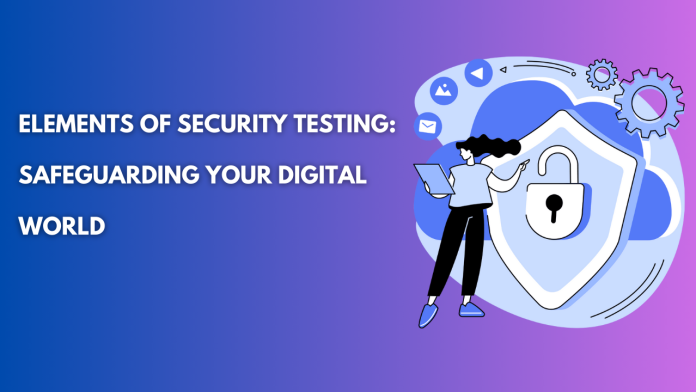The significance of security in the current digital era, where information is freely shared across the enormous internet, cannot be stressed. Everywhere you turn, there are cyberthreats waiting to take advantage of weaknesses and compromise important information. This is where security testing services providers companies comes into play, acting as a vital barrier to protect your online life.
Security testing is a thorough procedure designed to find and fix potential flaws in a system, application, or network. Its fundamental objective is to guarantee that data is kept private, integrity is upheld, and the system’s availability is not jeopardised.
Let’s examine this subject in more detail by dissecting the main components of security testing.
1. Vulnerability Assessment
The first stage of security testing entails a careful analysis of any potential weaknesses present in the system. This includes locating vulnerabilities in hardware, software, or even human components that hackers might take advantage of.
2. Penetration Testing (Pen Testing)
A proactive kind of security assessment is penetration testing, often known as ethical hacking. To find holes and vulnerabilities in a system, skilled specialists imitate the strategies of hostile hackers. Organisations can use this test to determine how well their defences work against actual threats.
3. Security Scanning
Using automated technologies is essential for security scanning. They assist organisations in deciding how to prioritise their remediation efforts by scanning software and networks for known security flaws and vulnerabilities.
( Read More – trategies for Successful Business Deals and Partnerships )
4. Authentication Testing
A key component of security is authentication. In order to make sure that only people with the proper authorization can access sensitive data and systems, this test assesses the robustness of authentication procedures.
5. Authorization Testing
User rights and access levels are verified during authorization testing. It makes sure users can only carry out tasks for which they have been given permission.
6. Data Encryption Testing
Protecting sensitive information requires data encryption. The effectiveness of the encryption techniques used to protect data during transmission and storage is assessed through security testing.
7. Security Configuration Management
Security settings must be configured correctly. This type of testing makes sure that system configurations adhere to compliance standards and security best practises.
8. Security Patch Management
Software must be updated and patched frequently to fix known vulnerabilities. An organization’s patch management procedure is evaluated as part of security testing to make sure it is efficient and current.
9. Firewall Testing
In order to separate internal networks from external ones, firewalls are used. It is ensured by testing their performance that unauthorised access attempts are stopped.
10. Intrusion Detection System (IDS) Testing
IDSs are intended to find suspicious behaviour or security lapses. Security testing confirms how well IDSs are able to spot threats and take appropriate action.
11. Incident Response Testing
An efficient incident response plan is crucial in the event of a security breach. Independent software testing companies can respond quickly and effectively to minimise damage by testing this approach.
12. Security Awareness Training
An important contributor to security breaches is human mistake. The effectiveness of staff security awareness training programmes may be evaluated as part of security testing.
13. Physical Security Assessment
Physical security is important but frequently disregarded. The safeguards for preventing physical access to data centres and sensitive locations are tested.
14. Mobile Security Testing
Mobile gadgets are possible targets as they become increasingly ingrained in our daily lives. It is crucial to test mobile software and hardware for security issues.
15. Cloud Security Testing
Securing data and apps in the cloud is crucial in the age of cloud computing. Cloud infrastructure is resistant to cyber assaults because of cloud security testing.
Conclusion
Security testing is the cornerstone of defence against changing cyberthreats in a connected world. You may strengthen your defences and keep your digital environment secure by methodically identifying and fixing weaknesses in different facets of your digital ecosystem.
Avoid leaving it until it is too late. Put in place reliable security testing procedures to protect your data, your company, and your peace of mind.
( Also Read More – The Art and Business of Animated Video Production in London )
FAQs
What are security testing’s primary objectives?
To maintain data confidentiality, integrity, and availability, security testing’s main objective is to find and fix vulnerabilities in systems, applications, or networks.
How frequently ought security testing should be carried out?
Regular security testing should be carried out, with the frequency varying according to the risk profile of the organisation and the changing threat environment.
Can manual security testing be replaced by automated tools?
Automated security scanning technologies are essential, but they can’t match the in-depth analysis and inventiveness of human-driven manual testing, like penetration testing.
Why is training in security awareness important?
Training in security awareness is essential since security breaches frequently result from human error. Employees who have received training can identify and avoid potential hazards.
What typical difficulties arise when testing cloud security?
Complex cloud architectures, protecting data privacy and compliance, and keeping up with developing cloud services and threats are some of the challenges in cloud security testing.













